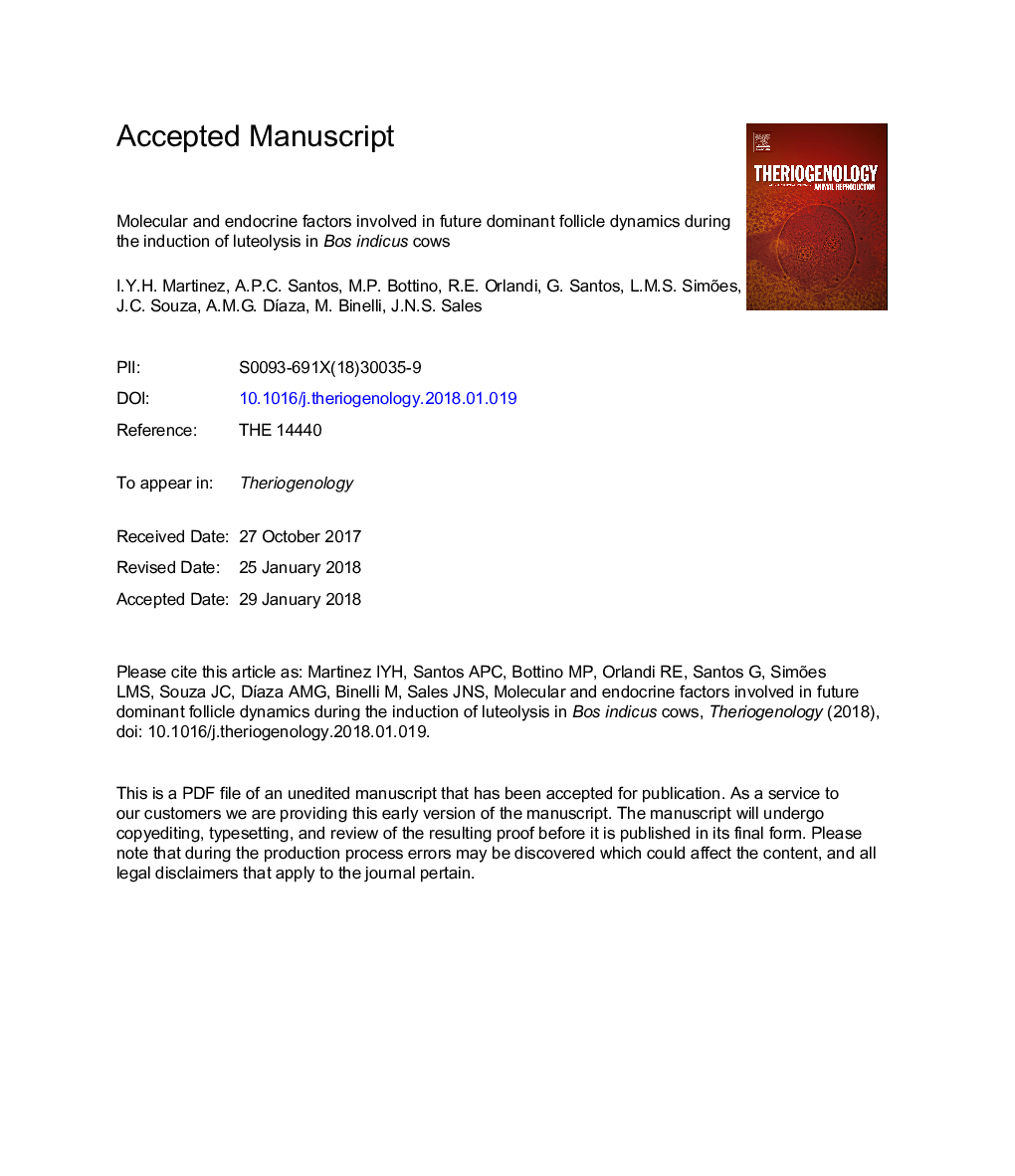| Article ID | Journal | Published Year | Pages | File Type |
|---|---|---|---|---|
| 8427297 | Theriogenology | 2018 | 20 Pages |
Abstract
The growth profiles of the future dominant follicle (DF) and subordinate follicle (SF) and the gene expression of the granulosa cells during luteolysis induction in Bos indicus cows were evaluated. Forty cows were synchronized with a progesterone and estradiol based protocol. After synchronization, cows with a corpus luteum (CL) were evaluated by ultrasonography every 12â¯h, beginning at eight days post ovulation. Cows identified with a follicle of at least 6.0â¯mm in diameter in the second wave were split into two groups (BD-before follicular deviation and AD-after follicular deviation. In the BD group cows received 500â¯Î¼g of cloprostenol (a synthetic analogue of prostaglandin F2α) when the DF reached a mean diameter of 7.0â¯mm (6.5-7.5â¯mm). In the AD group, cows received 500â¯Î¼g of cloprostenol when the DF reached a mean diameter of 8.0â¯mm (7.5-8.5â¯mm). Cows in both groups were submitted to aspiration of the DF at 96 and 72â¯h after prostaglandin was given. Follicular aspirations were performed to quantify IGF1R, LHR and PAPPA transcripts in the granulosa cells. The diameter of the DF at the moment of prostaglandin administration (Pâ¯=â¯0.001) and the growth rate of the SF (Pâ¯=â¯0.05) were greater in the AD group. There was greater abundance of LHR transcripts in BD cows (Pâ¯=â¯0.04). The remaining variables tested were similar between the experimental groups (Pâ¯>â¯0.05). In conclusion, the induction of luteolysis before follicular deviation does not interfere with dominant follicle dynamics. However, it causes granulosa cell LHR down regulation.
Related Topics
Life Sciences
Agricultural and Biological Sciences
Animal Science and Zoology
Authors
I.Y.H. Martinez, A.P.C. Santos, M.P. Bottino, R.E. Orlandi, G. Santos, L.M.S. Simões, J.C. Souza, A.M.G. DÃaza, M. Binelli, J.N.S. Sales,
